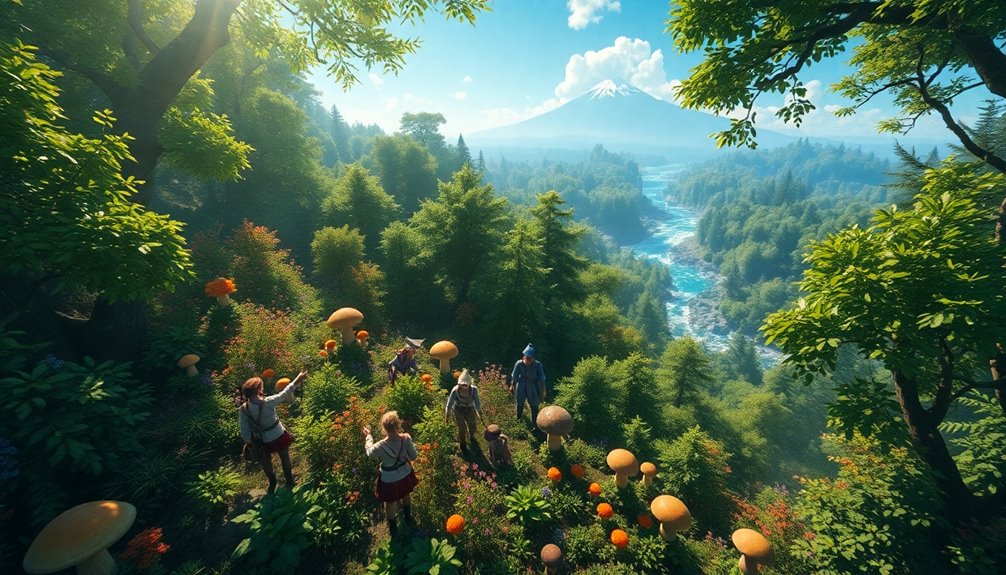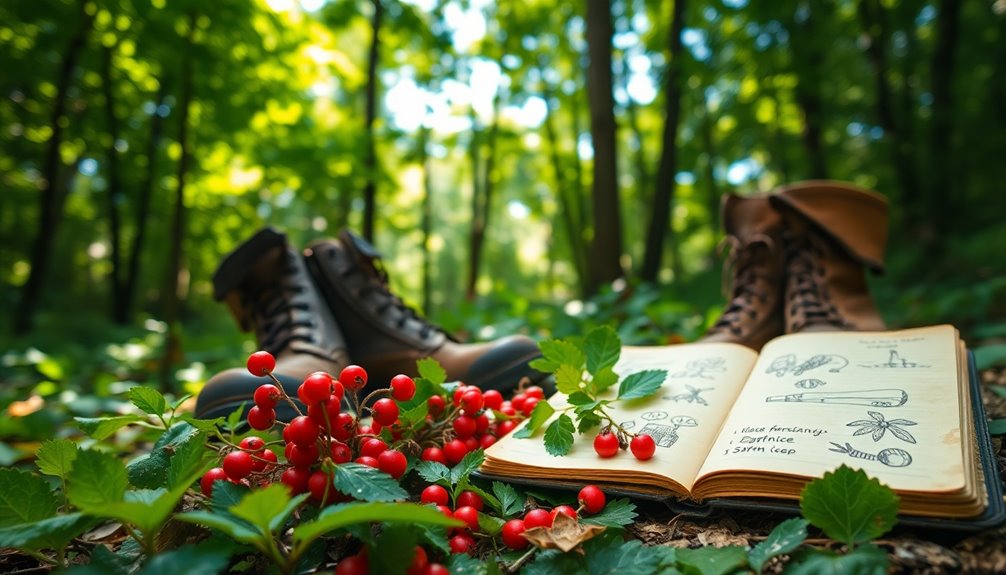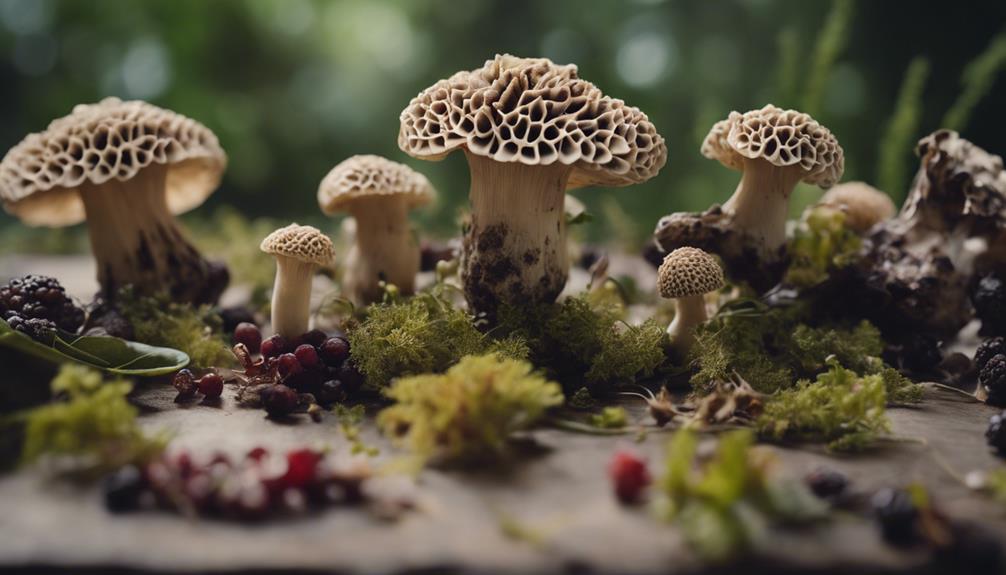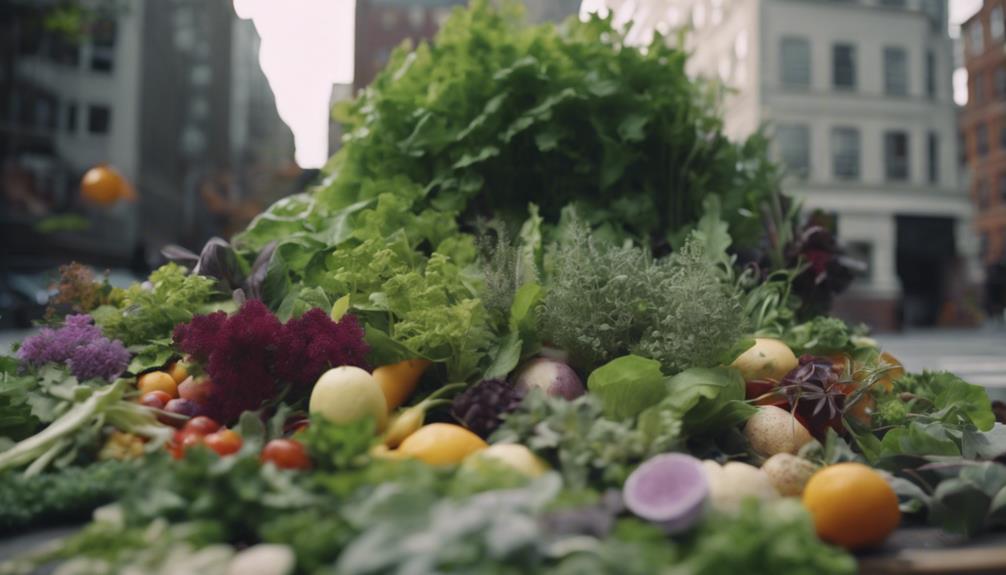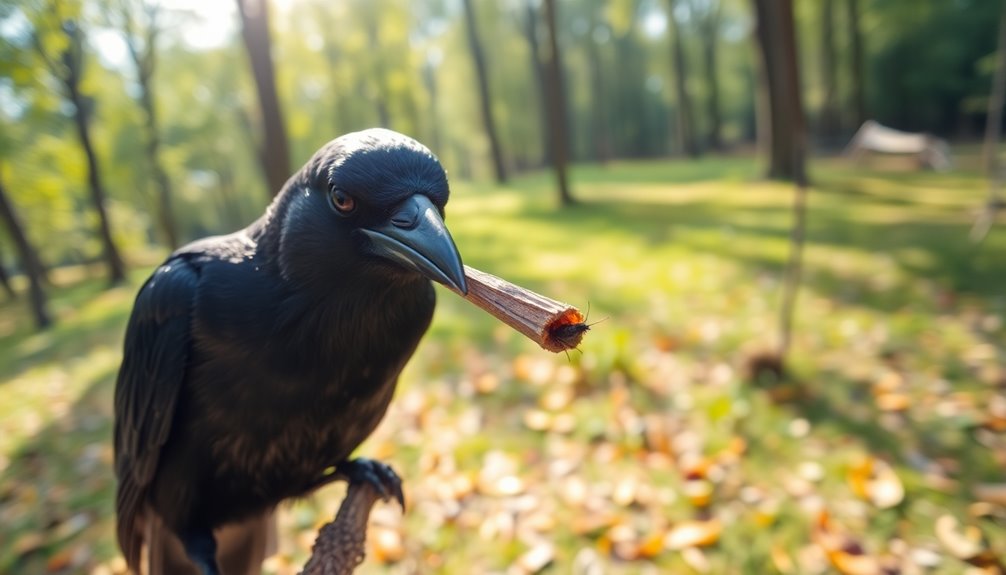To level your foraging in Lost Ark, start at Medrick Monastery for a mob-free experience near Freyad Lake Triport. Next, hit Dyorika Plain for abundant plant nodes or explore Croconys Shore for crafting materials. As you progress, Tideshelf Path in Punika and Tiktatika Colony offer high-density herb nodes with minimal monster interference. Utilizing the Green Thumb skill at level 30 greatly enhances your efficiency, allowing you to gather multiple herbs at once. Joining a group can also boost your resource yield. Keep exploring hidden spots to uncover even more foraging treasures!
Key Takeaways
- Medrick Monastery offers rich plant life with mob-free areas, perfect for early game foraging.
- Tiktatika Colony is a top tier 3 spot with high herb node density and minimal monsters.
- Breezesome Brae provides abundant crafting nodes and low mob presence for efficient resource gathering.
- Utilize the Green Thumb skill at level 30 to gather multiple herbs simultaneously for increased efficiency.
- Group foraging enhances resource yields and rare drop chances, making it a strategic choice for leveling.
Foraging Basics and Tips
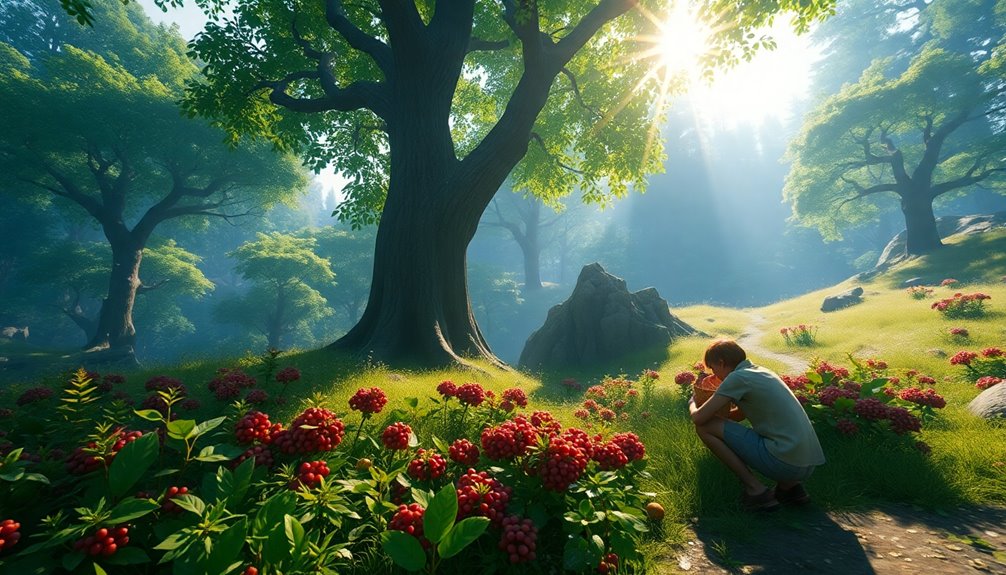
Foraging in Lost Ark is an essential skill that can greatly enhance your gameplay experience. To get started, you'll need specific tools, which you can upgrade from Apprentice to Adept. Upgrading these tools boosts your gathering speed and resource bonuses, so prioritize this as you progress.
Timing's key in foraging, too. The availability of resources often varies depending on the time of day, so you'll want to forage during peak hours for certain items. Keep an eye on your energy levels as well; having a supply of Basic Life Energy Potions can be a game-changer for extended foraging sessions.
Another tip? Team up with friends! Group play considerably increases your resource yield, meaning coordinating with team members can lead to more efficient foraging sessions.
Finally, utilize maps to identify resource hotspots. Knowing the best spots for foraging will enhance your efficiency and help you gather the materials you need faster.
With these basics and tips, you'll set yourself up for success in foraging in Lost Ark, making the most of every gathering opportunity that comes your way.
Early Game Foraging Spots

If you're just starting your adventure in Lost Ark, you'll want to know the best spots for gathering resources. Here are some top early game foraging spots that offer plenty of opportunities to collect valuable items without much hassle.
| Foraging Spot | Description |
|---|---|
| Medrick Monastery | Rich plant life and mob-free areas near Freyad Lake Triport. |
| Dyorika Plain | Vast farming area with abundant plant nodes, accessible from Monterque or Bishu Manor. |
| Croconys Shore | Long line of crafting materials in the west zone, perfect for new players. |
| Dreamwalker Flower | Commonly found early game, essential for crafting and quests. |
| Weak Mobs | Early game areas feature weak mobs for minimal combat interference. |
These locations provide a great mix of resources like the Dreamwalker Flower, which is vital for your crafting needs. So grab your gathering tools and head out to these early game foraging spots, where you can efficiently gather materials without worrying about combat. Happy foraging!
Optimal Foraging Locations
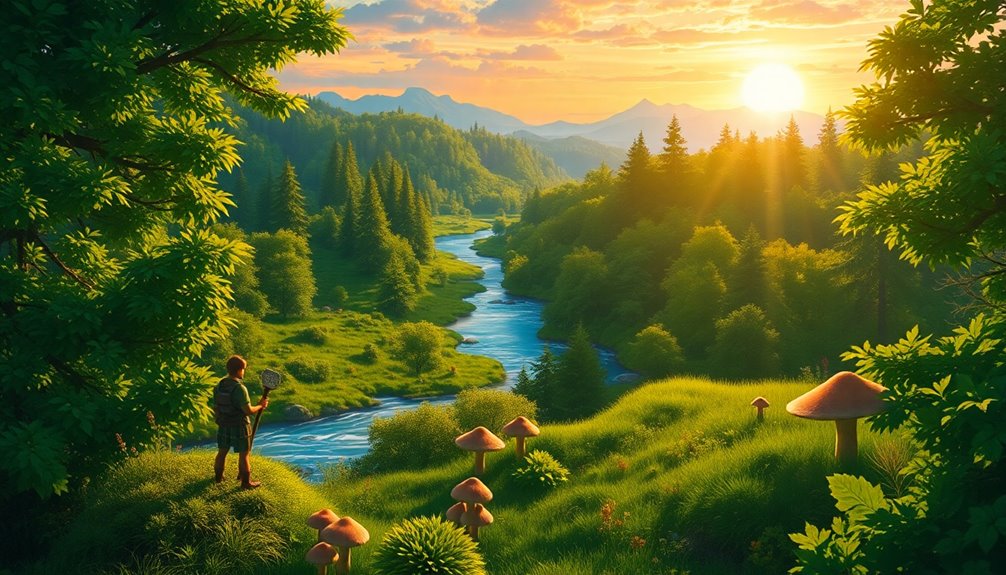
As you progress into the mid-game of Lost Ark, it's time to explore ideal foraging locations that maximize your resource gathering. Knowing where to go can make a big difference in your foraging efficiency.
Here are three excellent foraging locations you should consider:
- Tideshelf Path (Punika) – This area is perfect for wood cutting and mining, while also offering decent herb nodes in the western region. Just be ready to deal with a high monster density.
- Tiktatika Colony – Regarded as the top tier 3 foraging spot, it boasts a high density of herb nodes, especially on the eastern side. You'll encounter minimal monsters, making it a prime choice for focused gathering.
- Breezesome Brae (Rohendel) – Known for its rich crafting nodes, this location has minimal mob presence, allowing you to forage efficiently without constant interruptions.
These excellent foraging locations will help you gather resources more effectively, so gear up and head out! Happy foraging!
Best Foraging Areas for T3
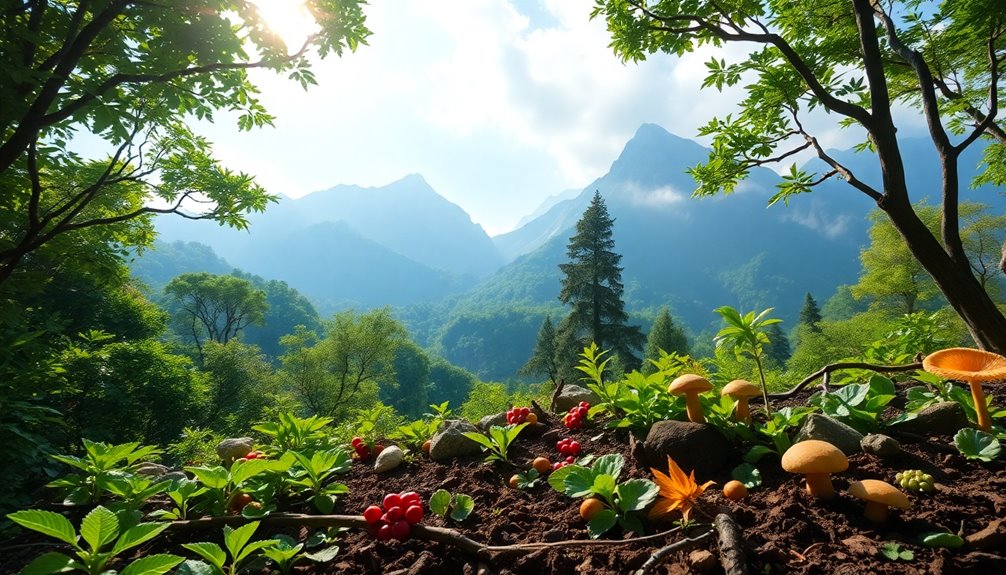
When it comes to finding the best foraging areas for tier 3 resources in Lost Ark, players have several excellent options to choose from. The premier location is Tiktatika Colony, which boasts a high density of herb nodes, particularly on the eastern side where you'll encounter fewer monsters. This makes it an ideal spot for uninterrupted foraging.
Another great area is Candaria Territory in South Vern. Here, the western side features a rich concentration of herbs, but be cautious—you'll need to navigate through numerous monsters. If you're up for the challenge, it's worth the effort.
Don't overlook Tideshelf Path in Punika, either. This area is known for its diverse gathering opportunities, with plenty of herb nodes available, despite the high monster density on the western side.
To maximize your foraging efficiency, make sure to utilize the Green Thumb skill at level 30. This skill allows you to collect up to five herbs in a row, considerably enhancing your resource gathering.
Regularly checking maps for ideal gathering routes can also help you make the most of these prime tier 3 foraging locations. Happy foraging!
Efficient Foraging Strategies

After exploring the best foraging areas for tier 3 resources, it's time to focus on how to maximize your efficiency while gathering. Implementing effective strategies can markedly boost your foraging efficiency and enhance your resource collection.
Here are three key tips to keep in mind:
- Use the Green Thumb Skill: Once you hit level 30, make sure to utilize the Green Thumb skill. This ability lets you gather up to five herbs in a row, drastically improving your yield rate.
- Monitor Respawn Times: Pay attention to the respawn times of foraged items. By knowing when resources will reappear, you can optimize your gathering routes and make the most of each session.
- Group Foraging: Team up with friends or other players. Engaging in group foraging not only increases your resource yields but also enhances your chances of encountering rare drops, thanks to team synergy.
Always equip the right tools and consider using buffs or Basic Life Energy Potions to maintain your energy, especially in high-density mob areas.
Frequently Asked Questions
Where Is the Best Place to Level up Foraging in Lost Ark?
To level up foraging in Lost Ark, you'll want to focus on areas with high herb node density.
Tiktatika Colony is your best bet, offering a safe environment and plenty of resources. If you're feeling adventurous, try Candaria Territory, but be ready to face some monsters.
Delphi Township is great for early levels with weak mobs, while Breezesome Brae provides a peaceful atmosphere for gathering.
Choose based on your comfort with combat!
Where Is the Best Island for Foraging in Lost Ark?
When it comes to foraging in Lost Ark, you'll want to strike while the iron's hot!
Lullaby Island stands out with its rich resources and unique foraging opportunities. If you're after crafting materials, Slime Island's herb nodes are plentiful.
For rare items and less competition, check out Orvis Island. Just remember to keep an eye on resource respawn times and prepare for any mobs lurking around to keep your gathering sessions smooth.
What Is the Fastest Way to Level up Foraging?
To level up foraging quickly, focus on high-density herb nodes in areas like Tiktatika Colony and Candaria Territory.
Use the Green Thumb skill to collect multiple herbs at once, greatly boosting your yield.
Team up with other players for efficient resource gathering and to increase your chances of rare drops.
Equip upgraded tools to enhance your gathering speed, and always check maps for ideal foraging routes while being mindful of nearby enemies.
Where Is the Best Place to Farm in the Lost Ark?
So, you want to know the best place to farm in Lost Ark?
Well, why not just pick a spot where you can gather herbs while dodging monsters like it's an Olympic sport?
If you're feeling adventurous, Tiktatika Colony's got herbs galore and hardly any foes.
But if you like a challenge, head to Candaria Territory.
Just remember, you're there to farm, not to become monster bait.
Choose wisely and happy gathering!
Conclusion
In your quest to master foraging in Lost Ark, remember that every gathering spot is like a hidden treasure chest waiting to be discovered. Just as a skilled fisherman knows the best spots to catch the biggest fish, you'll find your perfect foraging locations with a bit of exploration. Keep experimenting with different areas, and you'll reel in resources faster than you can say "Epic loot!" So immerse yourself, and let your foraging skills shine!

